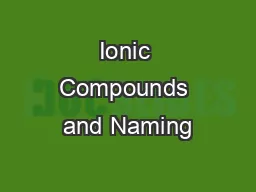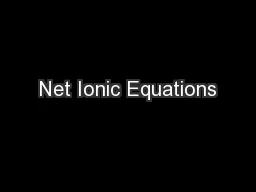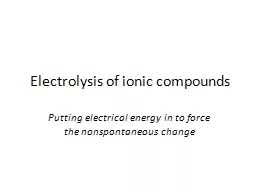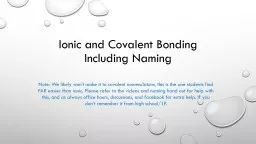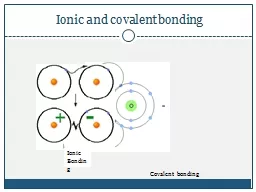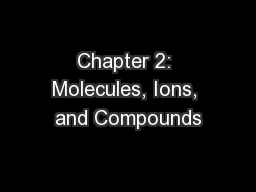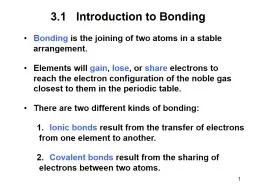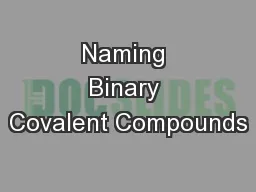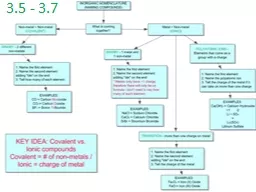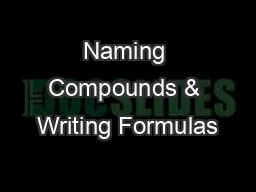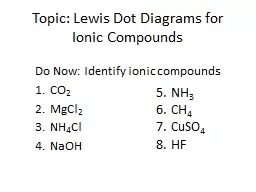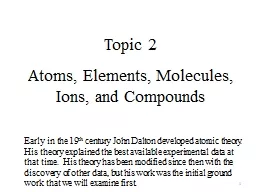PPT-Ionic Compounds and Naming
Author : phoebe-click | Published Date : 2016-05-16
Chapter 410411 and 5 Combining Elements When we begin combining elements we make compounds Two types Nonmetal and metal Nonmetal and nonmetal Each type has unique
Presentation Embed Code
Download Presentation
Download Presentation The PPT/PDF document "Ionic Compounds and Naming" is the property of its rightful owner. Permission is granted to download and print the materials on this website for personal, non-commercial use only, and to display it on your personal computer provided you do not modify the materials and that you retain all copyright notices contained in the materials. By downloading content from our website, you accept the terms of this agreement.
Ionic Compounds and Naming: Transcript
Download Rules Of Document
"Ionic Compounds and Naming"The content belongs to its owner. You may download and print it for personal use, without modification, and keep all copyright notices. By downloading, you agree to these terms.
Related Documents

